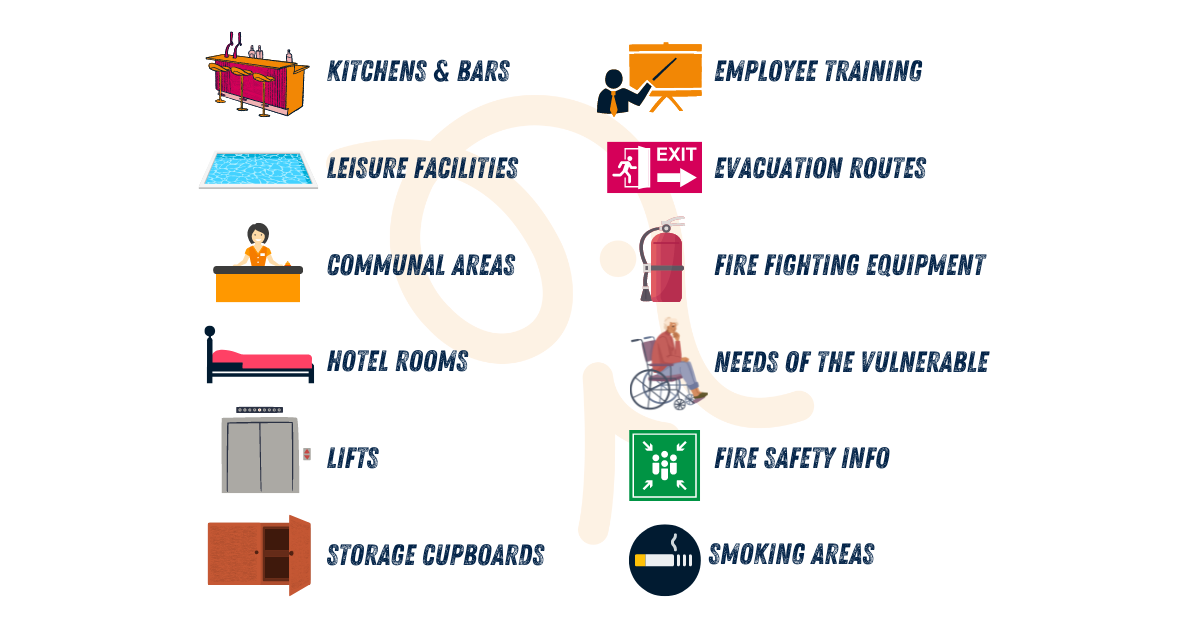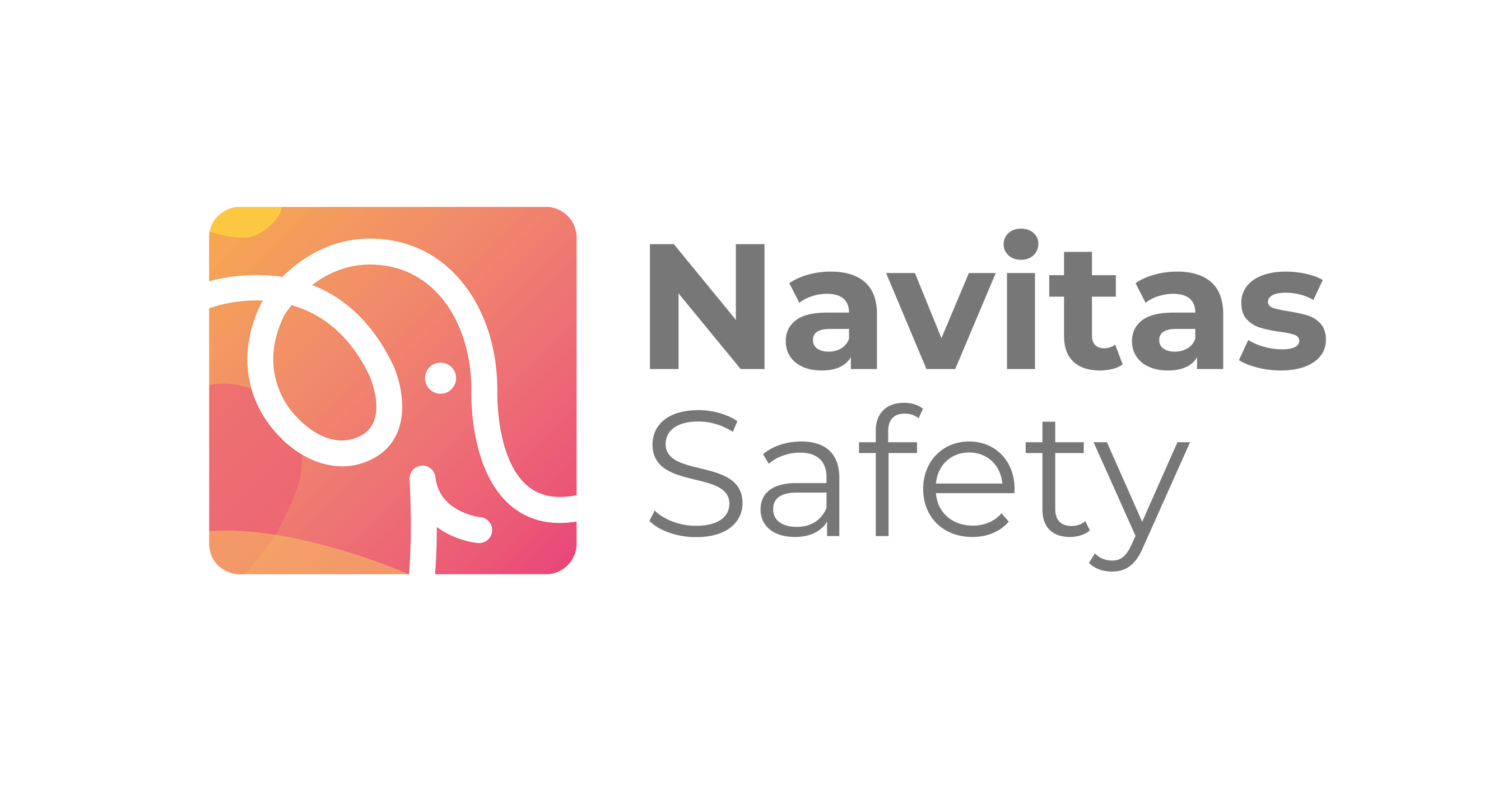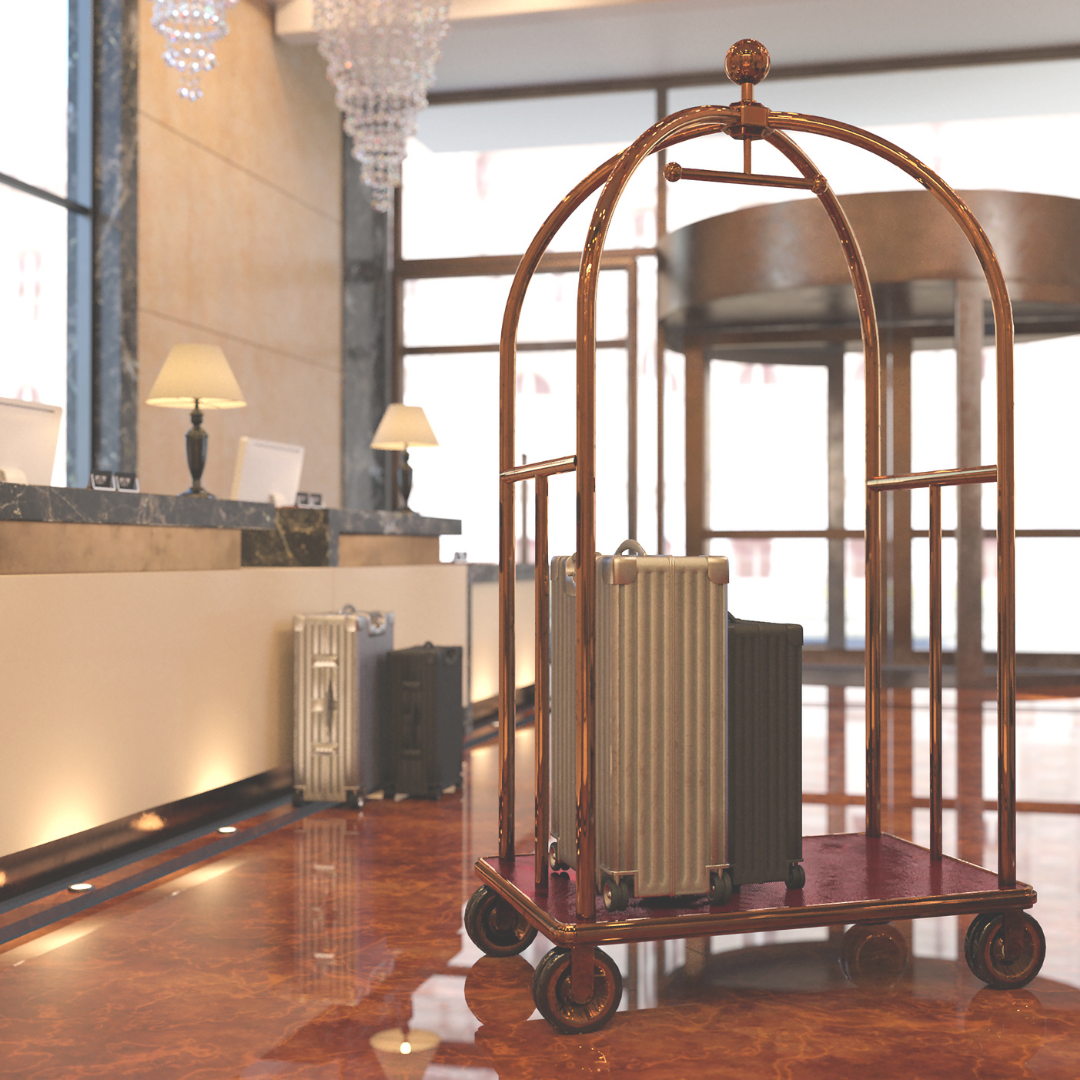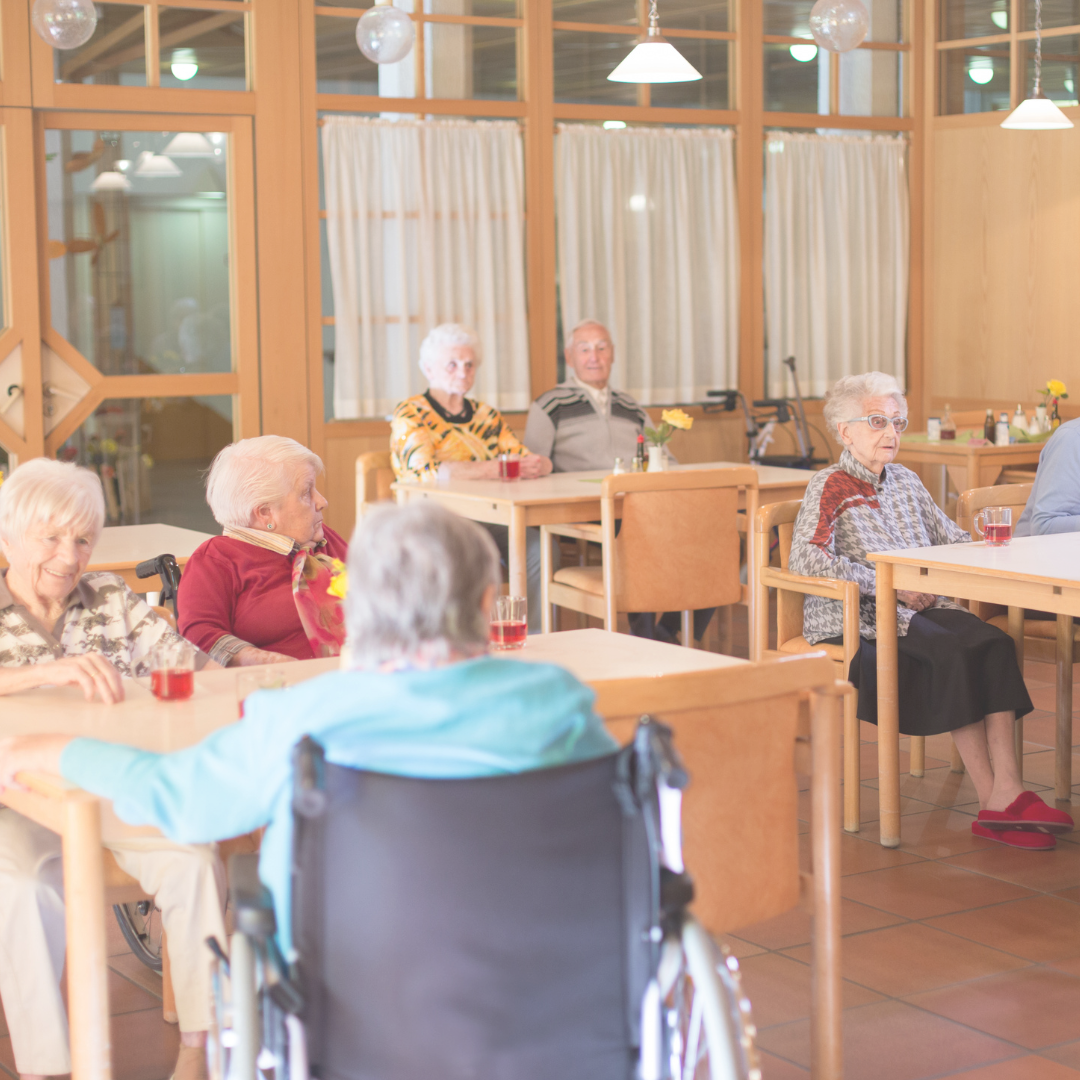Hotels are complex and busy operations. With constant guest arrivals and departures, day and night time standards to monitor, kitchens, bars and leisure facilities to oversee, and staff on changing shift patterns, it is no surprise that hotels require comprehensive and dedicated management to ensure everything runs smoothly. In particular, fire safety is critical to get right to prevent catastrophic events.
A fire in a hotel quickly becomes an emergency. It is paramount that strict regulations and plans are in place to keep staff, guests / members, visitors and contractors safe. But how can you do this?
What is Required by Law?
The Regulatory Reform (Fire Safety) Order 2005 was introduced in October 2006 and sets the fire safety law in England and Wales for non-domestic premises.
The government website states that under this law you must:
- Carry out a Fire Risk Assessment
- If necessary, improve your fire safety measures
- Keep the risks, and your safety measures, under review
So, it all starts with a hotel specific Fire Risk Assessment. Let’s dive deeper into how these are carried out and what sort of things to include.
How Do I Carry Out a Hotel
Fire Risk Assessment?
A Hotel Fire Risk Assessment preempts any fire hazards in your hotel, tackling it before issues arise.
According to the Fire Safety Order a relevant ‘responsible person’, this could be someone like an owner or general manager with relevant training and experience, must ensure a hotel has carried out a fire risk assessment. These can be conducted by that responsible person, a nominated ‘competent person’ (as defined by government guidelines), or a specialist like the Navitas Safety Fire Risk Assessors.
Each area of your hotel must be assessed, from lobbies, store rooms, guest bedrooms and hallways, to kitchens, bars and leisure facilities. External areas must be included too. The aim is to identify all potential fire hazards, pinpoint how you are currently preventing them from becoming a problem (controls) or, if you’re not adequately doing so, how you will be going forward. You can then implement any changes and stay one step ahead of the risks.
It is also important to review and/or re-complete your hotel fire risk assessment to ensure fire safety standards remain in place and effective; particularly if you have any significant changes to the premises, operations or occupancies. The frequency of this will depend on a number of factors, however as a general guideline a fire risk assessment should be completed every 1-3 years depending on your hotel and the risk level. It must also be reviewed every 12 months or if there are any significant changes to your premises.
What Should Be Included?

Think the three P’s – Premises, People and Practices! Things to think about when completing a hotel Fire Risk Assessment are:
Kitchens and Bars
The risk of fire in a hotel kitchen or bar will depend on a number of factors, such as number and type of appliances, power sources, control of open gas, suitability of electrical installations and equipment brought into the hotel, etc. These should all be taken into account.
Leisure Facilities
This includes all pools, spas, gyms, golf courses, etc. These are higher risk areas with regards to evacuation procedures.
Communal Areas
As the highest footfall areas, these are important. Include all hallways, cinema/TV rooms, lobbies, etc.
Hotel Rooms
All electrical equipment supplied in hotel rooms should be safety checked and tested annually by professionals (this goes for electrical equipment everywhere in the hotel!). Place any safety signs needed to make guests and employees aware of the dangers when using appliances (hair dryers, kettles, etc) and keep good control of heating appliances and smoking controls.
Lifts
These should be clearly labelled as not to be used in the event of a fire unless they are specifically designed as fireman’s lifts.
Cleaning / Storage Cupboards
These, like all areas, should be kept tidy and any chemicals stored properly. Combustibles should be kept to a minimum and stored away from heat sources. Check the structural condition of all areas of the premises. If the building is particularly complex this should be completed by a specialist passive fire contractor who will be able to identify compartmentation breaches in areas that are not easily accessible such as room voids, ventilation ducting and partition walls.
Employee Training
It is vital that all employees undergo appropriate fire safety training. Enhanced training is required for fire marshalls. Employees need to be able to identify and report any fire risks or hazards along with having knowledge of all escape routes and emergency plans, including their roles within them. Management Teams need to be trained in the correct use of the fire panel and coordination with the fire authorities in the event of a fire situation.
Evacuation Routes
A clear evacuation process and routes should be in place in case of a fire emergency. This will ensure everyone is able to get to a place of safety – which may be indoors in a designated refuge point, or to the external assembly point which should also be clearly marked. The following controls are particularly important – clear signage, clear escape routes and fire doors, fire doors kept closed or appropriately held open with suitable devices (not wedged or propped), suitable emergency lighting to assist everyone in getting out of the building safely.
Fire Fighting Equipment
Fire fighting equipment, detection and warning systems should be regularly checked, tested and maintained.
The Needs of the Vulnerable
The needs of the vulnerable during a fire (eg. elderly, young or those with disabilities) should be taken into account. Personal Emergency Evacuation Plans (PEEP’s) may be required. This isn’t the only document required to be able to demonstrate fire safety. Others include a fire safety policy, evacuation plan, facilities safety documentation and in-house monitoring forms.
Fire Safety Information
Fire safety information for guests must be displayed prominently and all fire safety signage should be appropriately placed and clearly visible.
Smoking Areas
These should be clearly designated and labelled. Plus, areas where smoking is not permitted should also have clear signage, in order to avoid the risk of fires from cigarette butts on fabric, etc.
What Managers Need to Know
Fire risk assessments are required by law in hotels to identify, address and monitor potential fire hazards. The aim is, however, to address fire safety all the time so that when a fire risk assessment is undertaken, there are as few changes needed as possible. FRAs must also be updated regularly by an appointed ‘competent person’ and not just be an annual tick box exercise, but fire safety should be constantly influencing daily routines.
So, what can you do as a manager on a day-to-day basis to ensure this? Here are some basic hotel fire safety best practices that you should follow:
- Ensuring hallways, stairwells and escape routes are kept clear of any obstructions.
- Designated fire doors must be kept closed – make sure these are never wedged open.
- Fire drills and emergency evacuation plans should be practised regularly and recorded. False alarms should be recorded and should the unthinkable happen, a fire incident record should be completed to evaluate how well the situation was managed and if any corrective actions are required to continually improve procedures. It is particularly important to provide more regular training to Night Teams as this is a particularly higher risk time for hotels when a large number of people are sleeping and there are the least number of staff on duty.
- Ensure all new and existing staff are up-to-date with their relevant fire safety training and know what their roles are in a fire emergency. You should keep a record of their training.
- Make sure staff are familiar with your fire response team and know what to do in the event of finding a fire or hearing the alarm. Do staff know how to use fire fighting and evacuation equipment such as evac chairs?
- Ensuring your designated ‘competent person’ is regularly completing fire risk assessments and keeping a clear record of them (this may be you!).
- Staying on top of your safety paperwork and ensuring electrical equipment tests are regularly booked, leisure facilities are well maintained and kitchens and bars are kept clear and tidy.
Common Hotel Fire Regulation Breaches
In England and Wales, the penalty for a breach of fire regulations is an unlimited fine in the Magistrates and Crown Courts and the person responsible for fire safety is prosecuted as an individual, not as a part of the company. Any action taken against them is also published publicly.
Some of the fire regulation breaches that hotels have been fined from in the past are:
- Damaged or blocked fire doors
- Fire doors wedged open
- Lack of safety training for staff
- Inadequate emergency plan
- Inadequate fire detection system
- Inadequate fire risk assessment
Although the consequences of breaching regulations can be severe, as long as you have a suitable fire safety system and operation in place they can be avoided. Keeping people safe is the ultimate goal and staying on top of your fire safety measures daily achieves this.
When To Get Help
Getting help from a specialist can put your mind at ease as you are guaranteed your fire safety measures are compliant with laws and regulations. If you feel overwhelmed or unsure about tackling a hotel fire risk assessment yourself, you should seek advice from a specialist.
If you need help with hotel fire safety, Navitas Safety can assist you. We help hotels of all sizes stay safe. Our team at Navitas Safety can provide specialised Hotel Safety Audits which look at all areas of safety, including fire safety, across your premises to ensure you are meeting all standards. We can also offer hotel fire safety advice and arrange for fire risk assessments to be undertaken by one of our specialist Fire Risk Assessor Partners.
If you need help with your safety processes, speak to a member of our safety team who will be able to advise you on how to operate safely.
Subscribe for more safety content updates:






